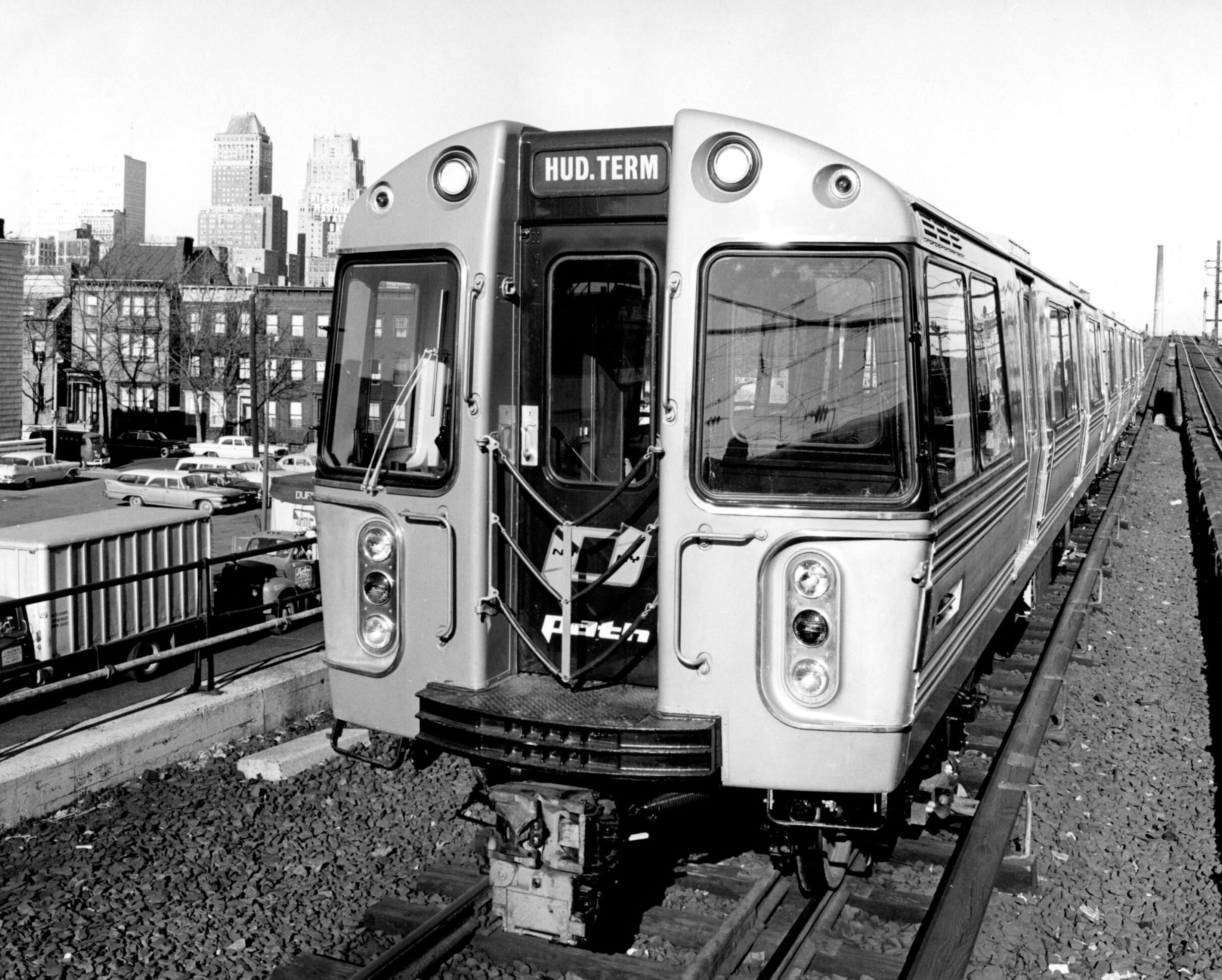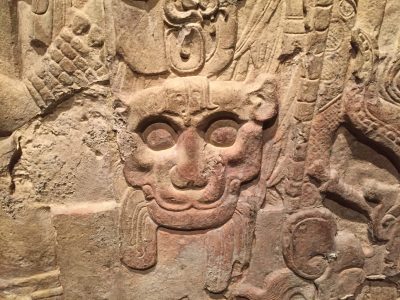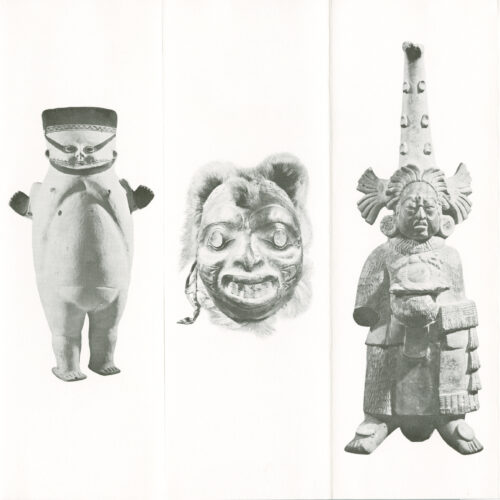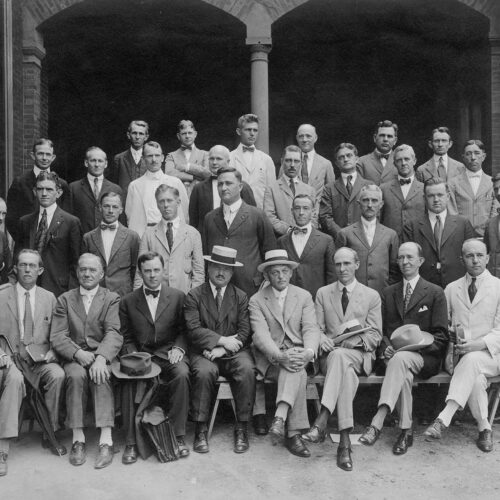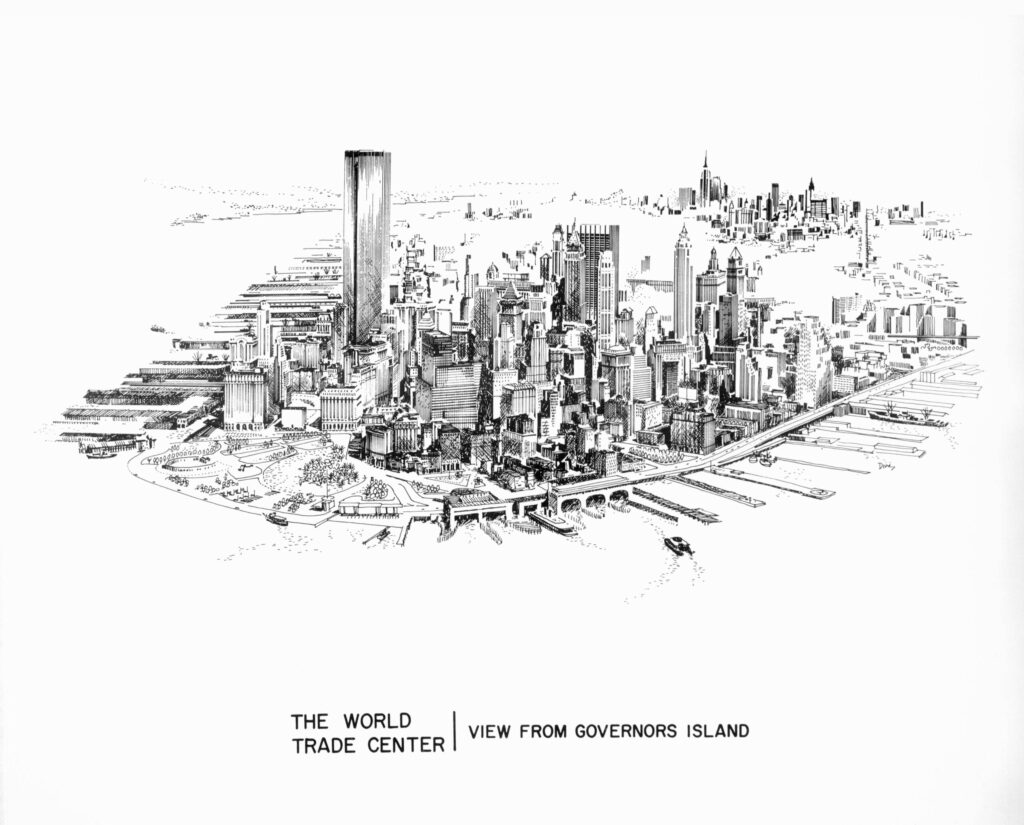
The Downtown Lower Manhattan Association records include rarely-viewed photographs, drawings, maps, brochures, and other papers that document the design and construction of the World Trade Center in Lower Manhattan, built between 1966 and 1975. This photo essay unveils the creation of the iconic Twin Towers as told through these records, showing the aspirations for the landmark site which, since September 11, 2001, has taken on tragic new significance.
The Downtown-Lower Manhattan Association
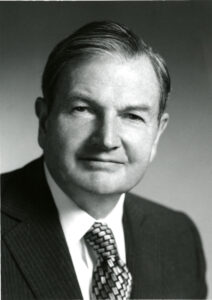
The Downtown-Lower Manhattan Association (DLMA) is a not-for-profit association founded in 1958 to rehabilitate, redevelop, and reinvigorate Lower Manhattan. The DLMA’s “First Report,” published on October 14, 1958, presented an assessment of the conditions in Lower Manhattan and offered a series of recommendations toward the revitalization of the area.
One of these recommendations was the creation of a new World Trade complex to bring together the many activities related to the financing of the imports and exports running through the Port of New York.
David Rockefeller was the DLMA’s first chairman. In a speech to the World Trade Week Luncheon in 1960, Rockefeller cited a Regional Plan Association study that predicted New York City’s waterborne foreign trade would increase in the following 25 years, and that New York would continue to dominate as a port.
This would prove an inaccurate prediction, however. The Port of New York in fact declined during the 1960s and 1970s.See also Marc Levinson, “Container Shipping and the Decline of New York, 1955-1975.” The Business History Review, Vol. 80, No. 1 (Spring 2006), pp.49-80.
An aerial view of Lower Manhattan circa 1950 shows its robust shipping activity. Notice the piers spreading out like porcupine quills into the Hudson and East Rivers.
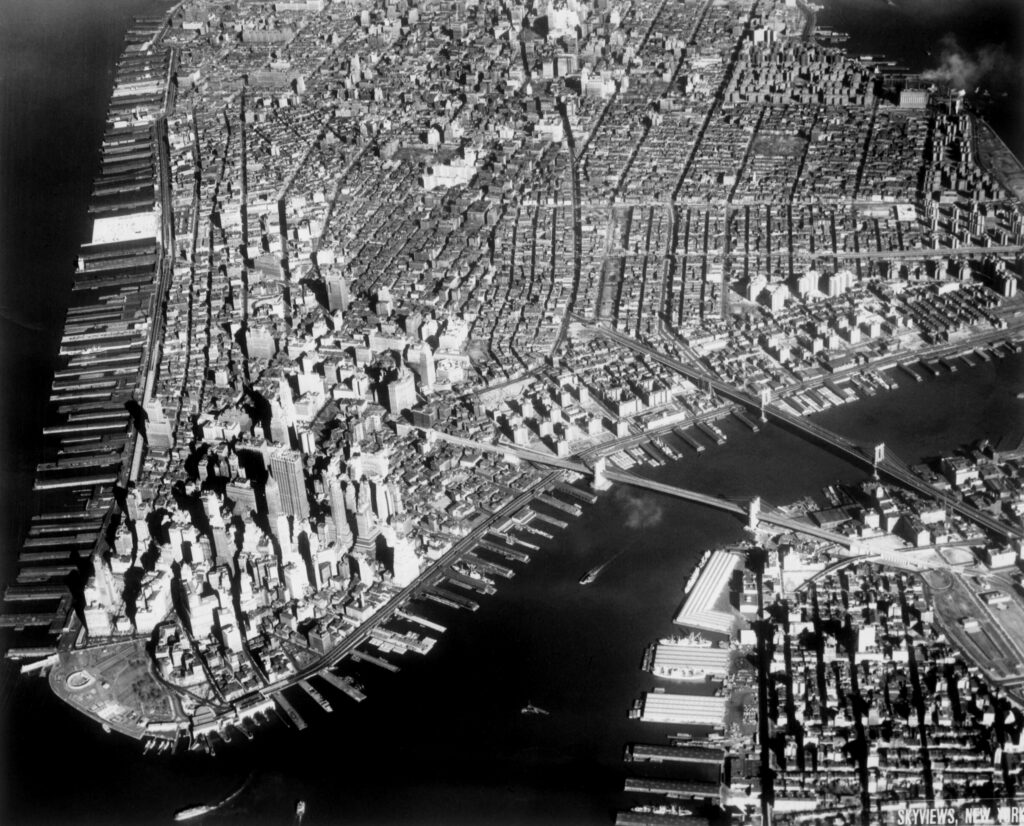
Discussions about a possible World Trade Center site first focused on the East Side of Manhattan.
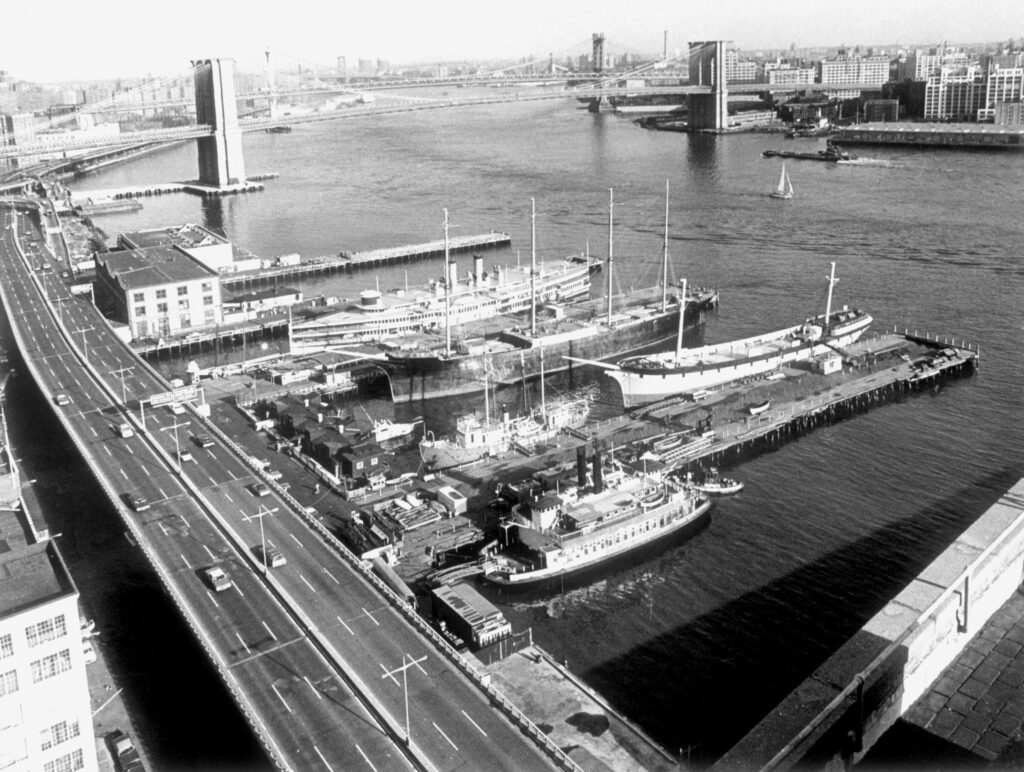
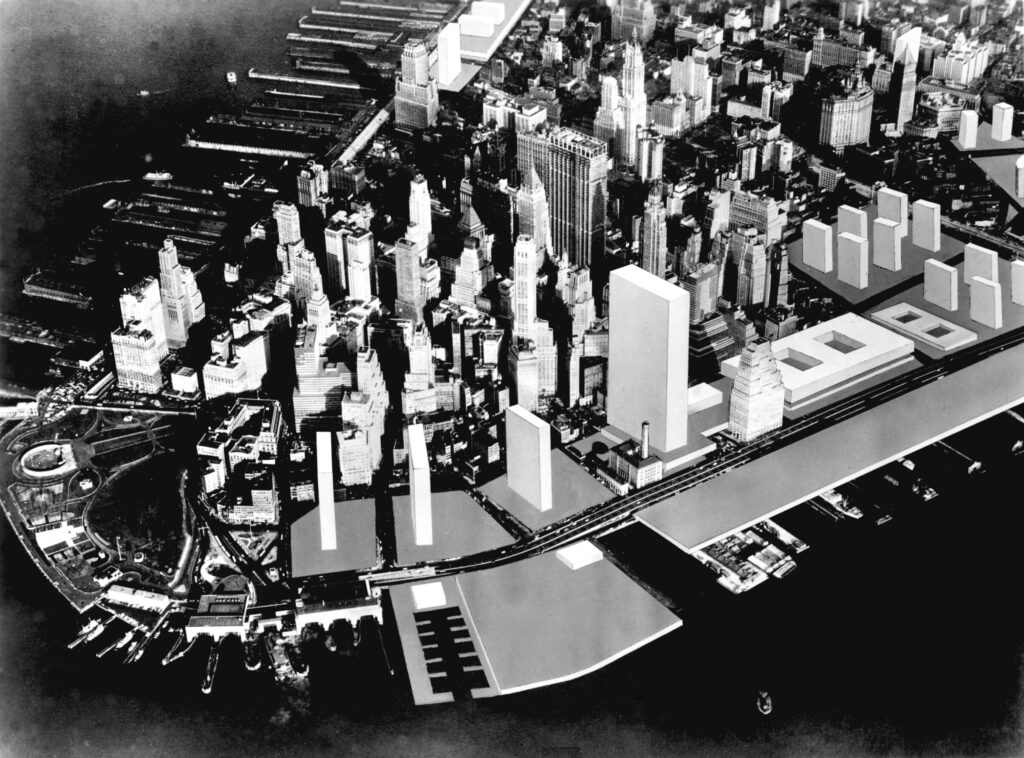
Early plans drawn up by architectural firm Skidmore Owings & Merrill, above, involved moving the Stock Exchange from the West Side to the East Side of Lower Manhattan, and creating an esplanade along the East River.
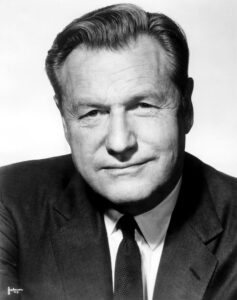
Plans Shift from East to West – and Bring an End to Radio Row
Robert Meyner, Governor of New Jersey, wanted the World Trade Center to be built on Manhattan’s West Side to make an easy commute for New Jersey residents. Nelson A. Rockefeller, Governor of New York (and brother of David Rockefeller) struck a deal to move the World Trade Center from its planned East Side location to the West Side on the condition that the Port Authority of New York and New Jersey would take over the bankrupt railways (Hudson & Manhattan Railroads) and build the PATH system. The Port Authority subsequently tore down piers on the West Side and built ports in Newark and Elizabeth, New Jersey.
Developers planned to use eminent domain to clear Radio Row, a West Side neighborhood that housed businesses specializing in the sales of radio and electronic equipment. Concerned Radio Row shop owners created the Downtown West Businessman’s Association to try to block the Port Authority’s plans. The shop owners tried to fight the destruction of the area through the courts, but ultimately did not succeed.
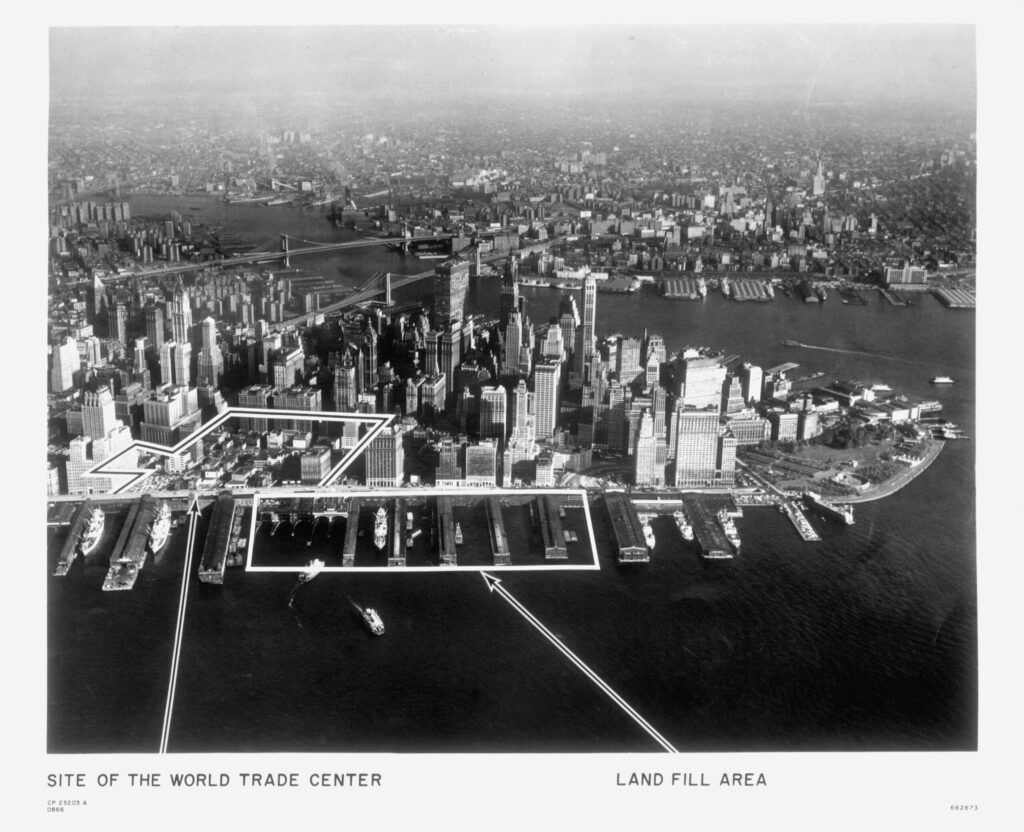
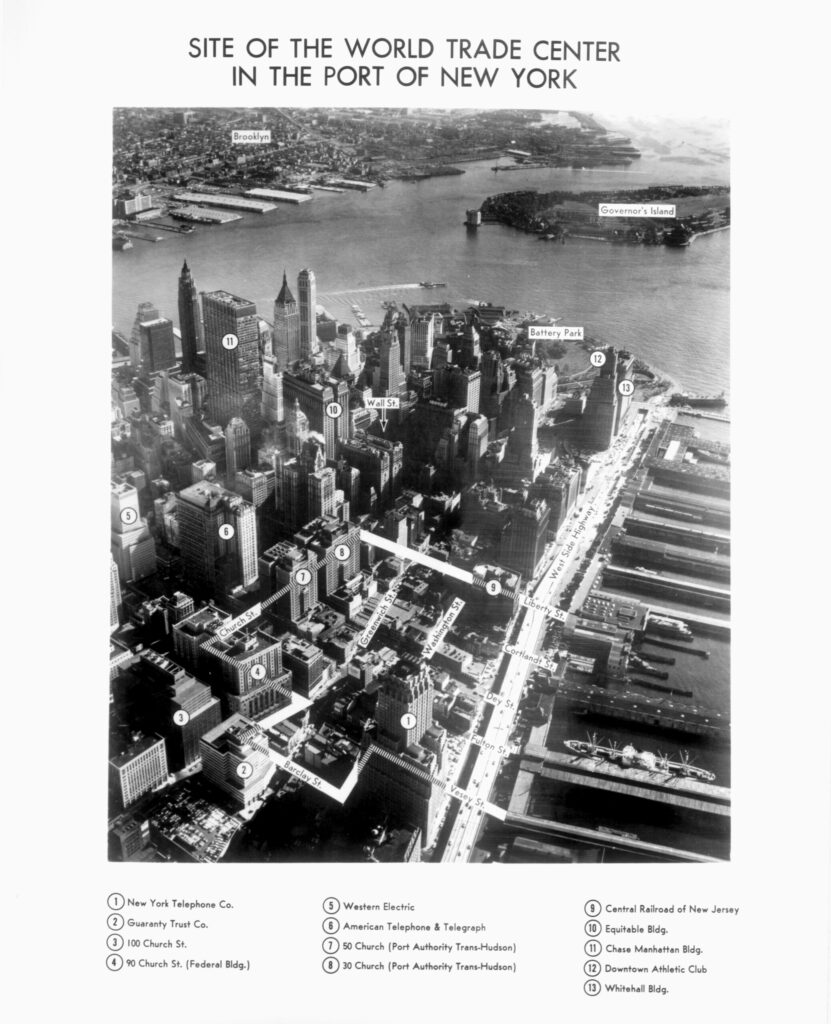
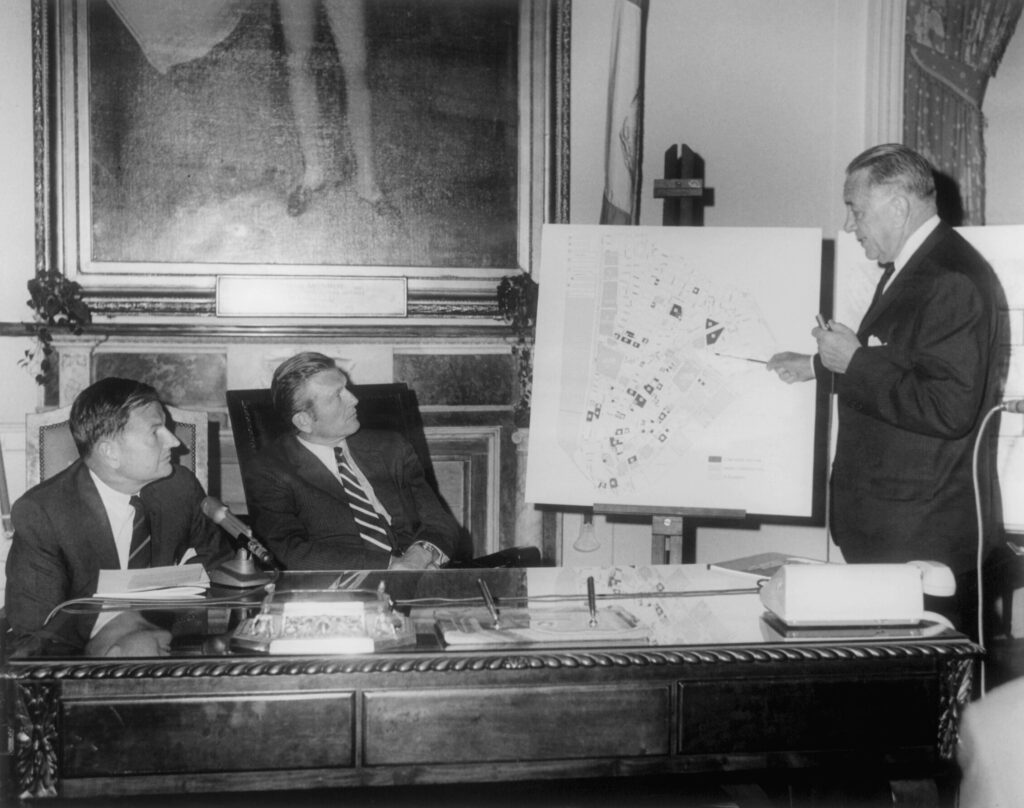
In 1969, Edmund Wagner, President of the DLMA (above, far right), presented a proposal to David Rockefeller (far left), and John Lindsay, Mayor of New York City.
Design of the World Trade Center
After the final decision on location of the site landed on the West Side, architect Minoru Yamasaki was chosen to design the World Trade Center itself.
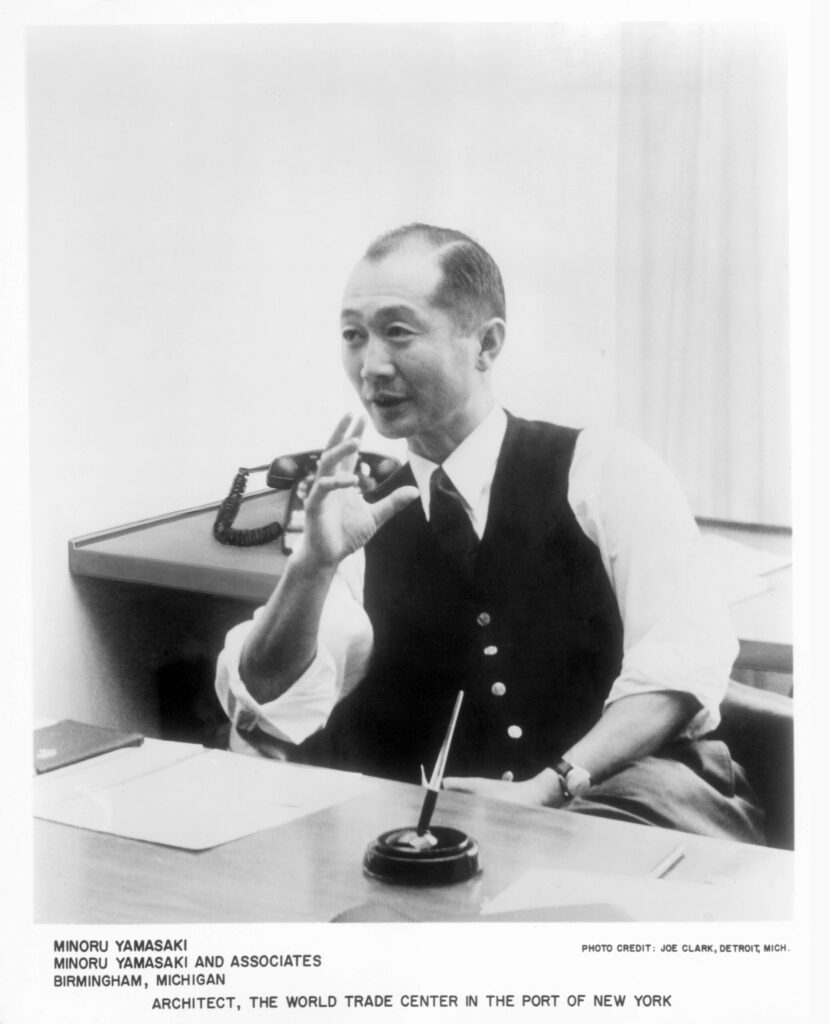
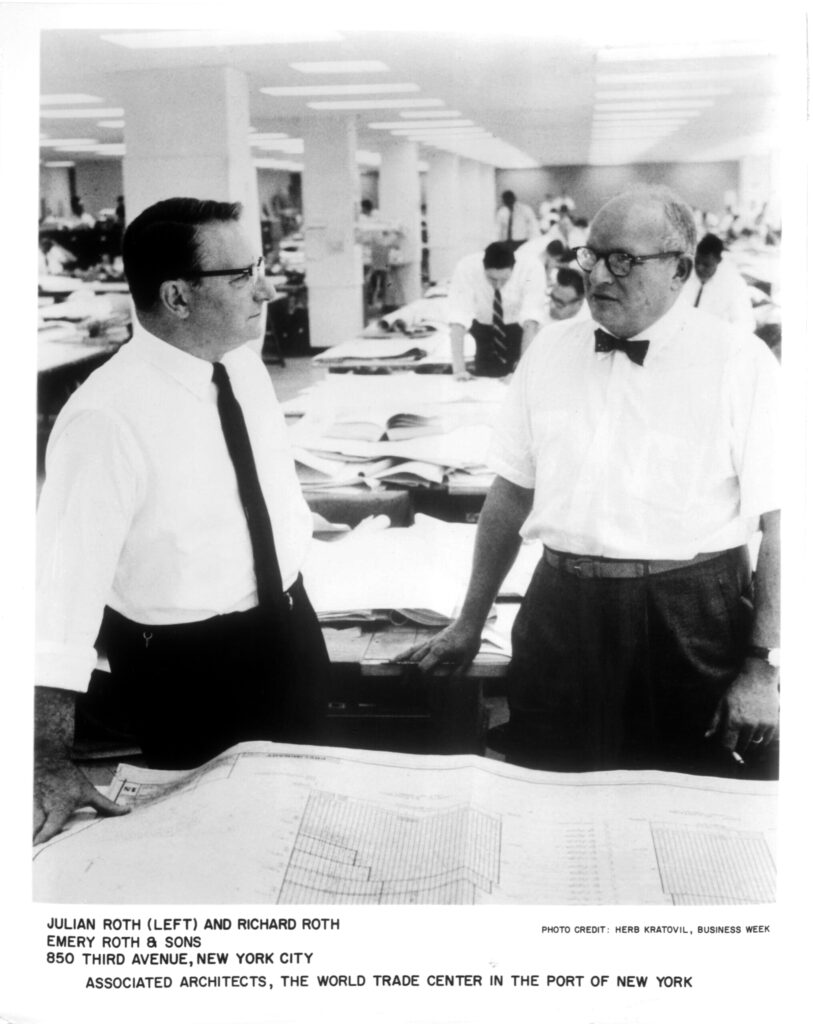
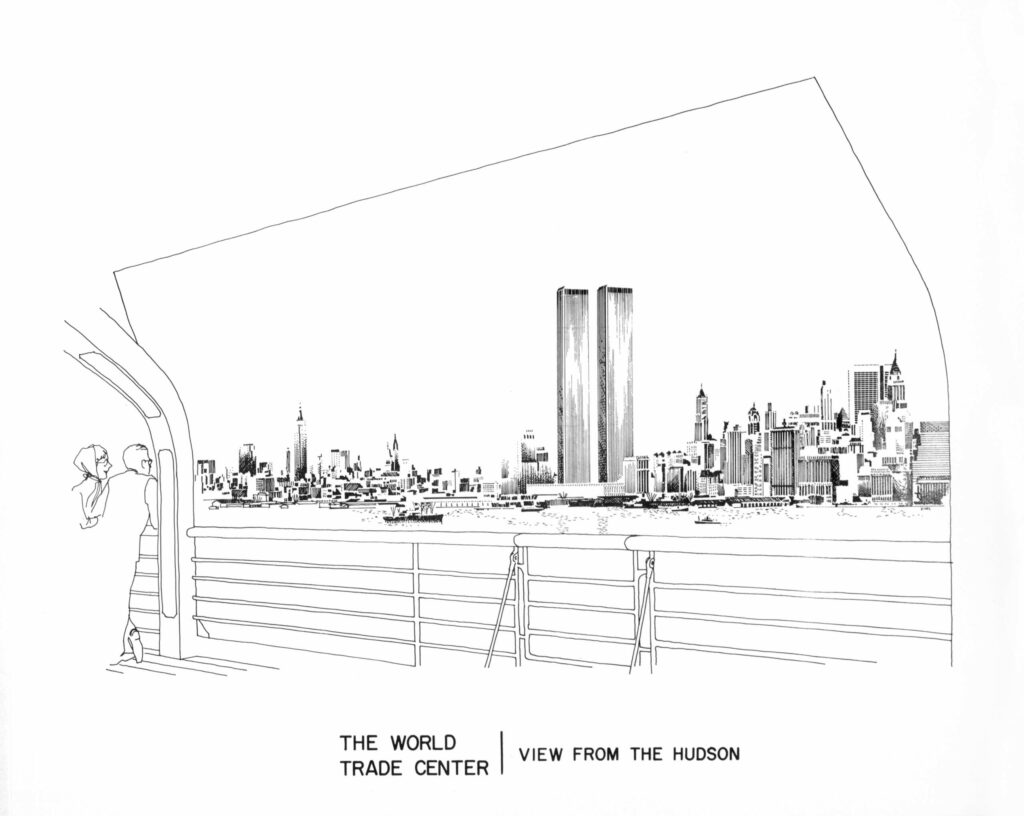
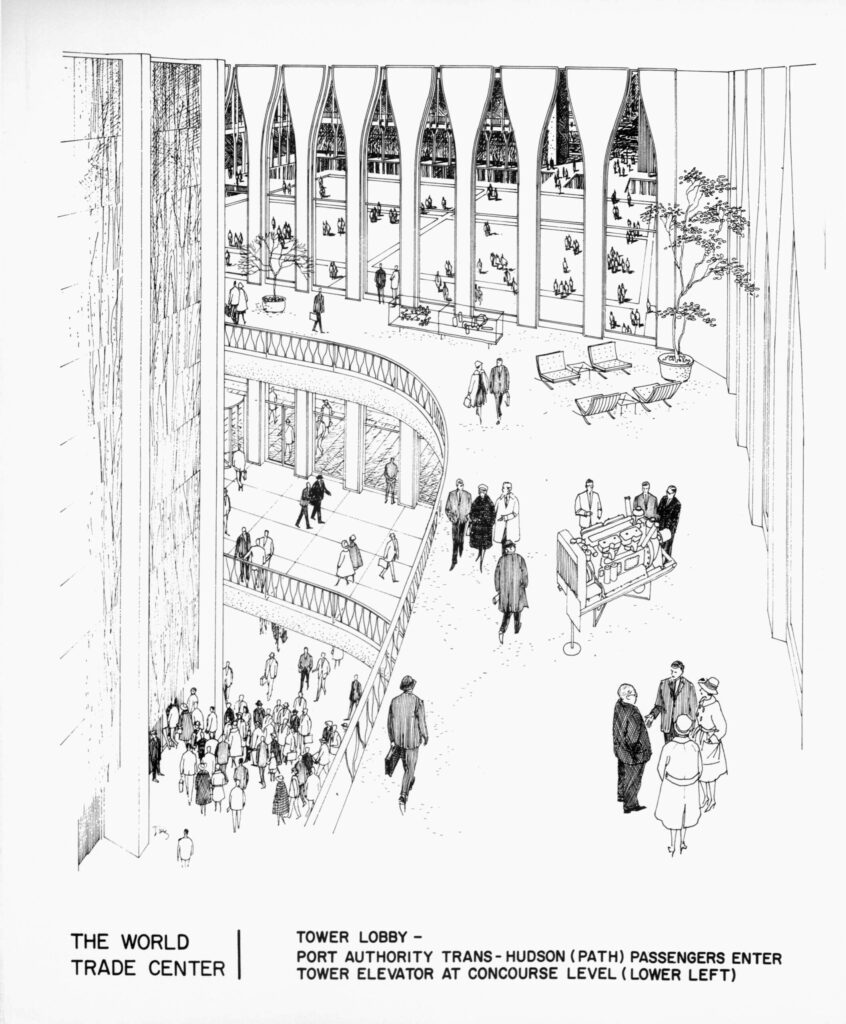
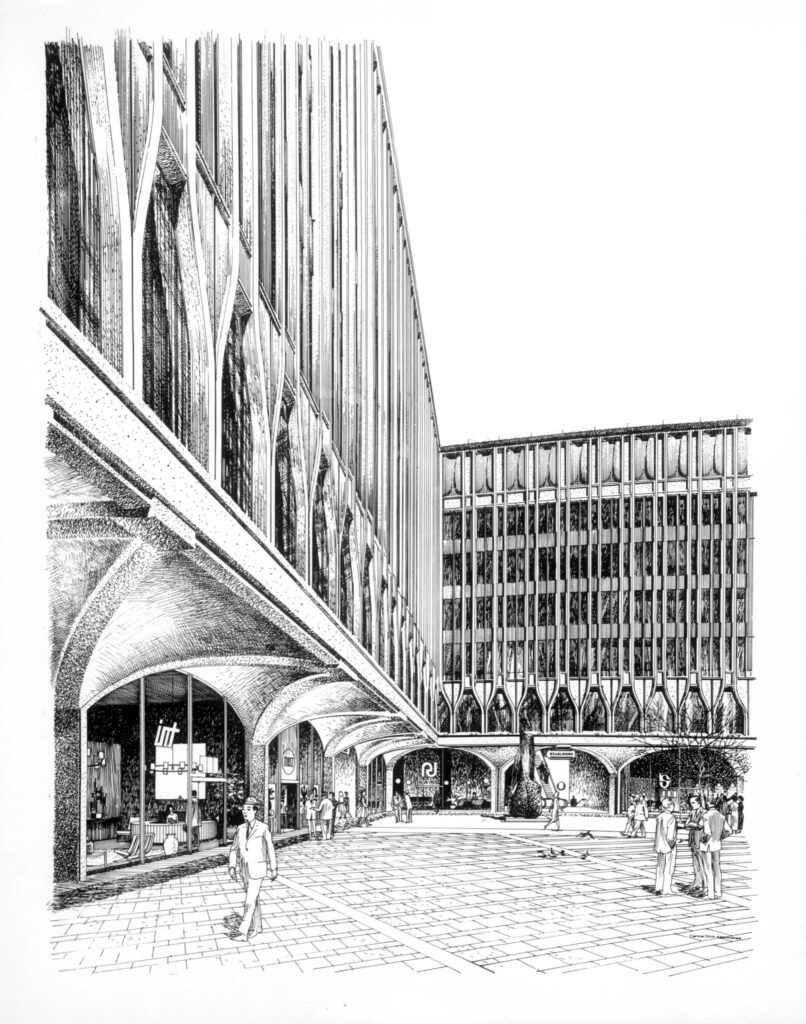
Construction Begins
Construction on the seven-building complex began on August 4, 1966. During peak construction, 3500 people worked on the site.
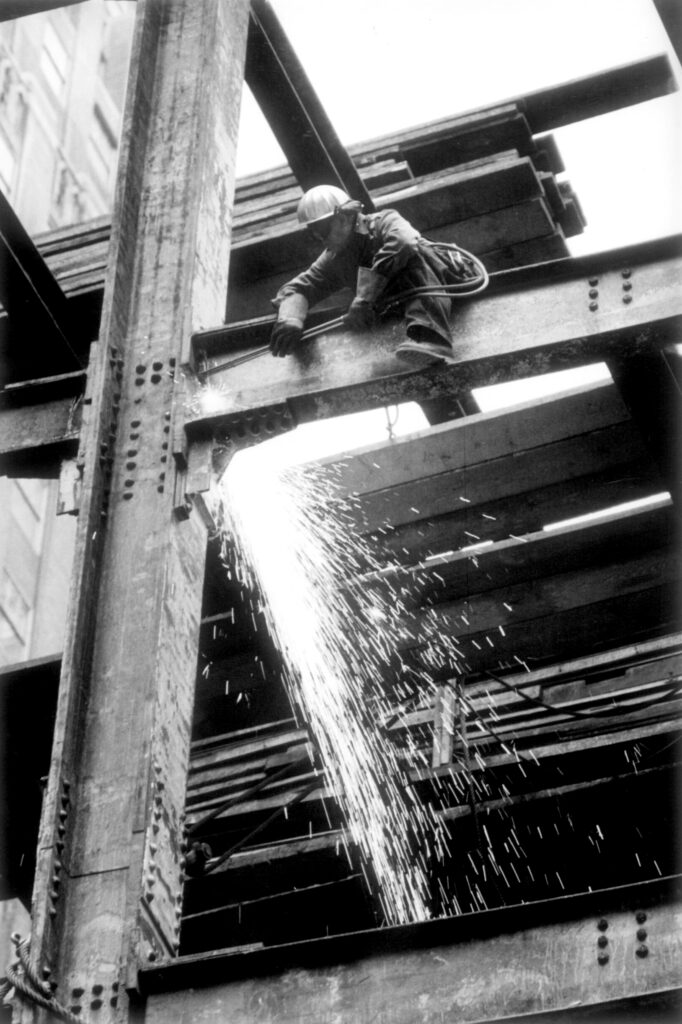
The Twin Towers would eventually house almost 10 million square feet of office space.For more information, see World Trade Center Facts and Figures.
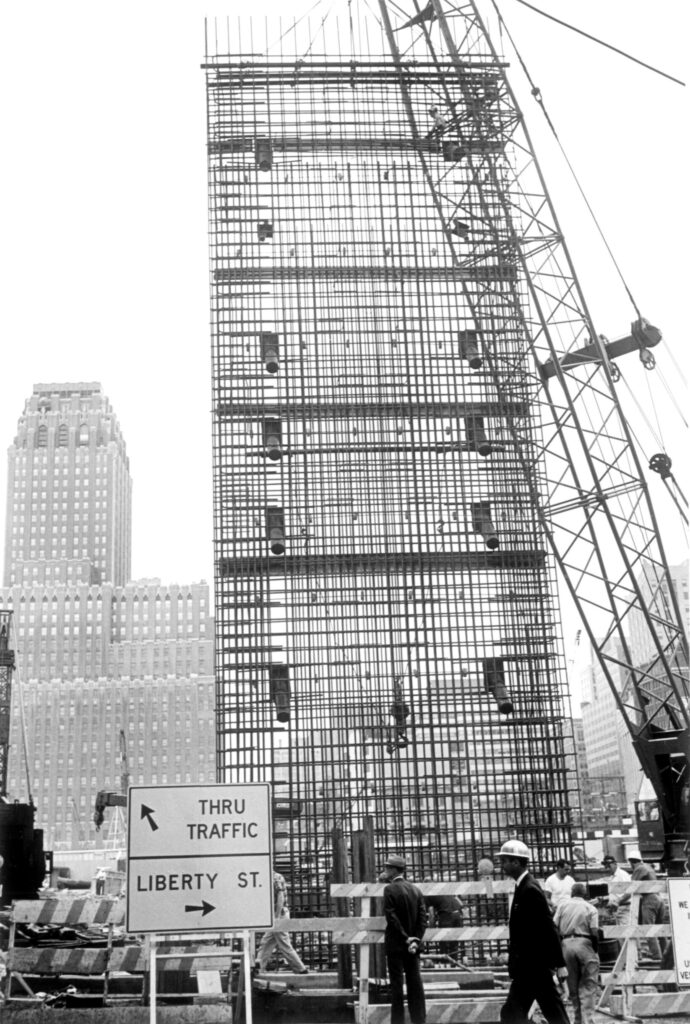
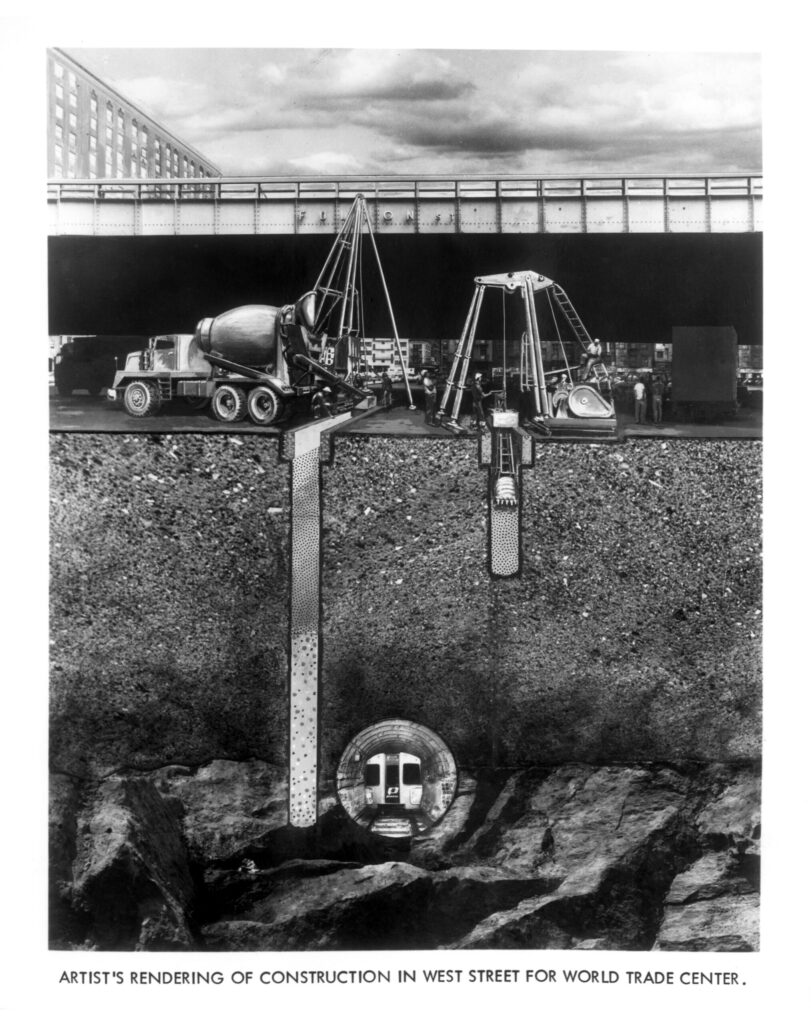
The Port Authority Trans-Hudson (PATH) Transit system would connect the World Trade Center site to the cities of Newark, Harrison, Jersey City, and Hoboken, New Jersey.
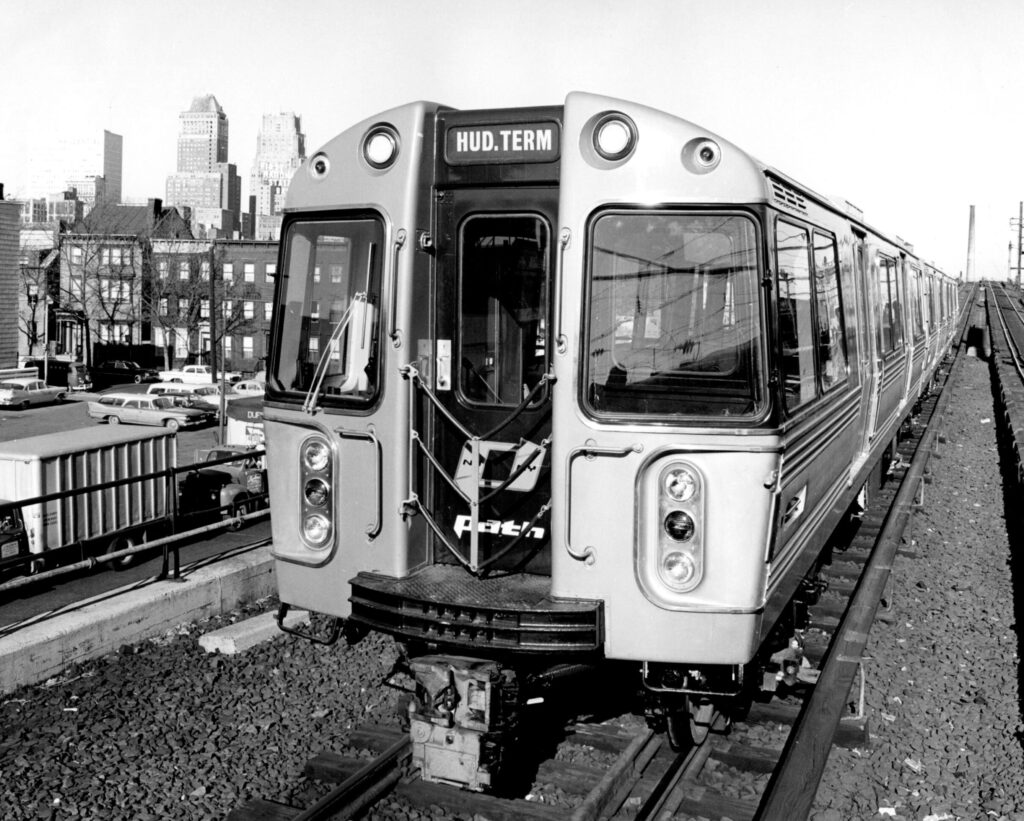
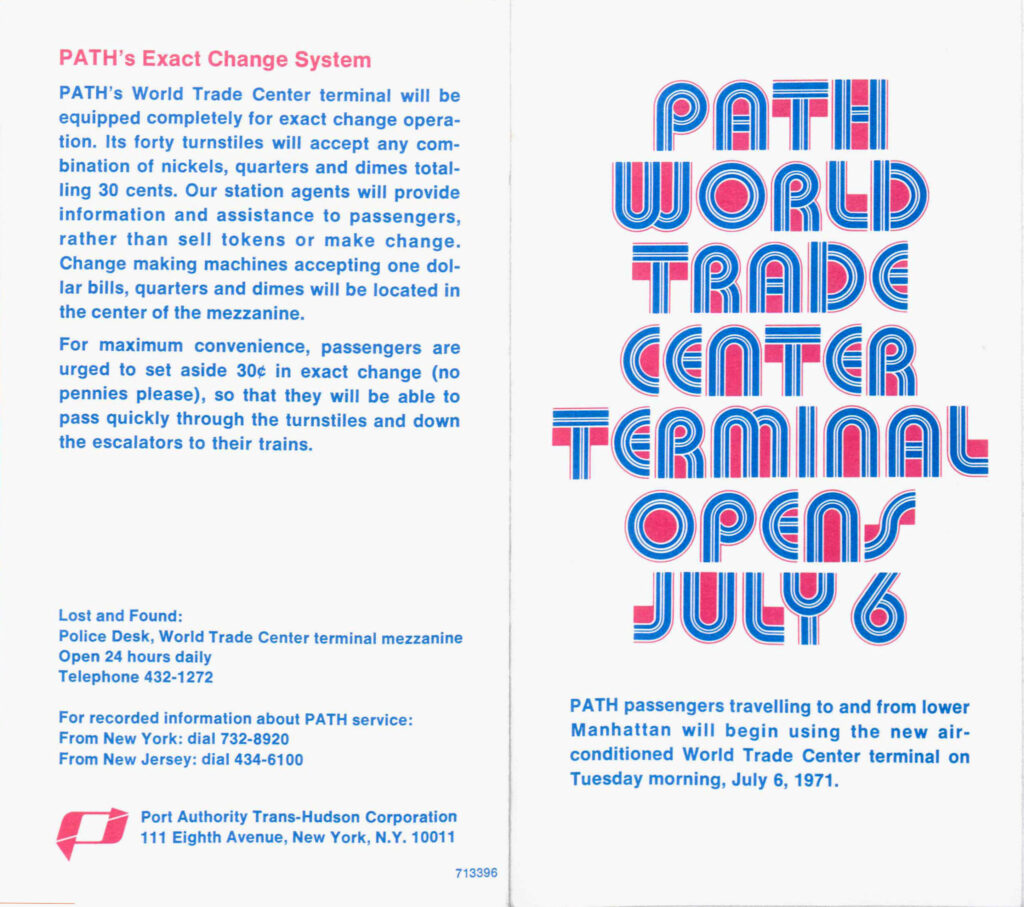
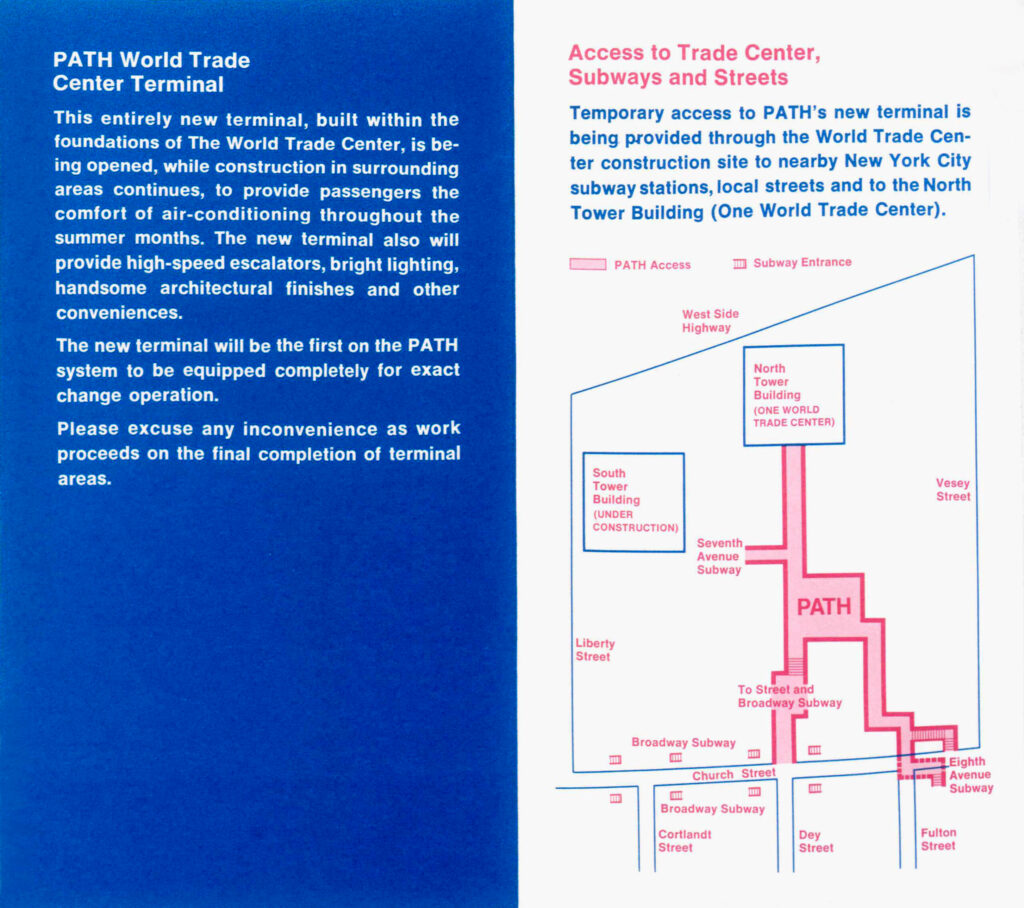
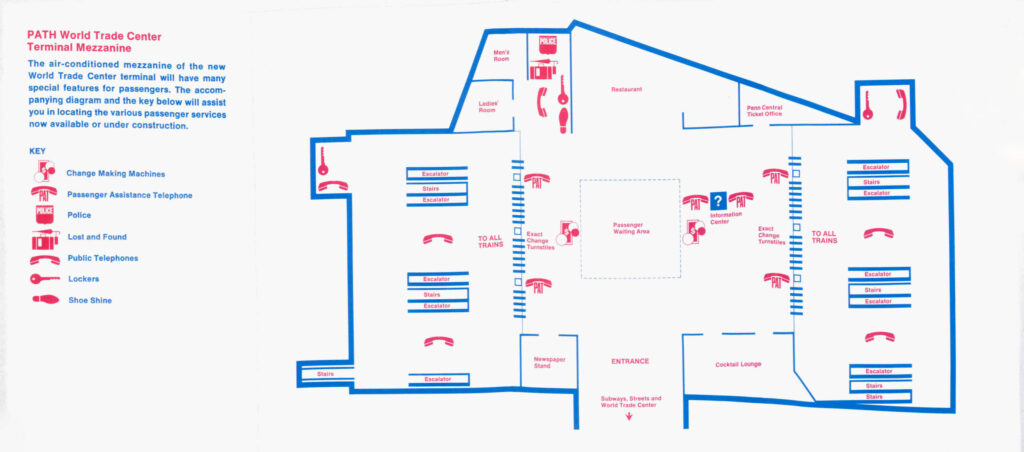
Marketing the World Trade Center
Once complete, the World Trade Center was marketed as a center for ideas, global learning, international law, and international exchange, not only trade. Striking graphics in the print materials of the time played off of the site’s architectural design.
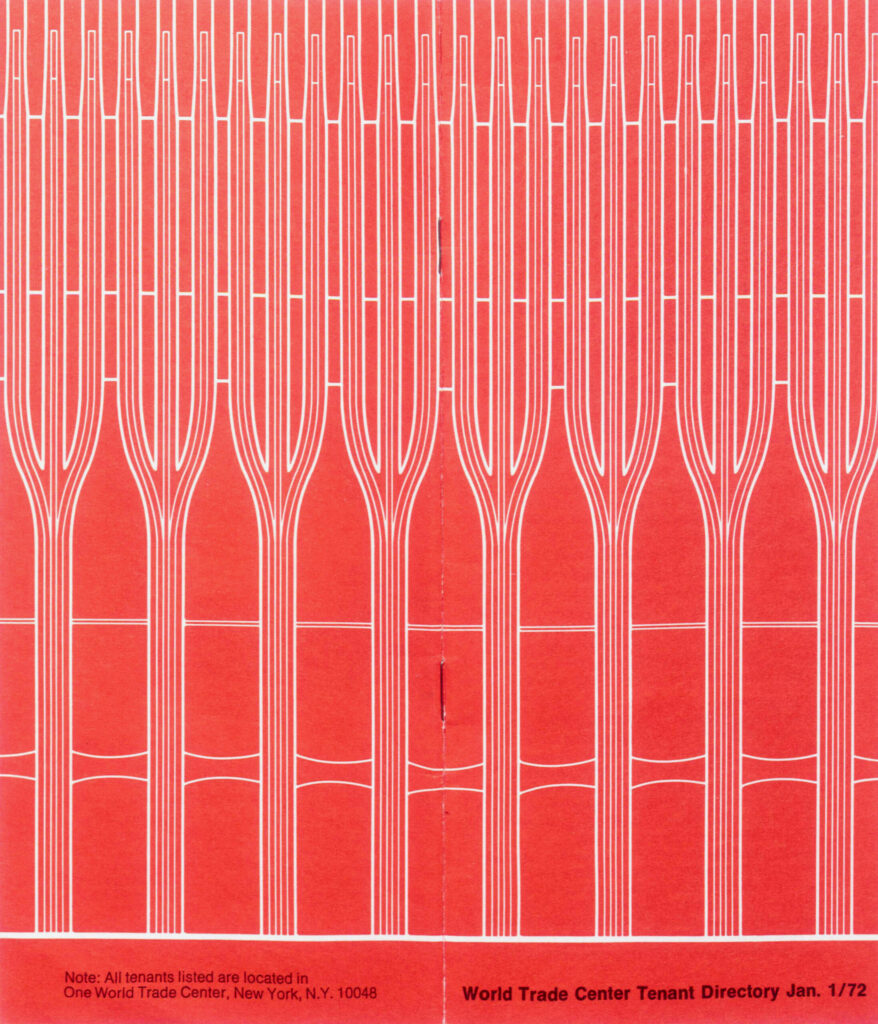
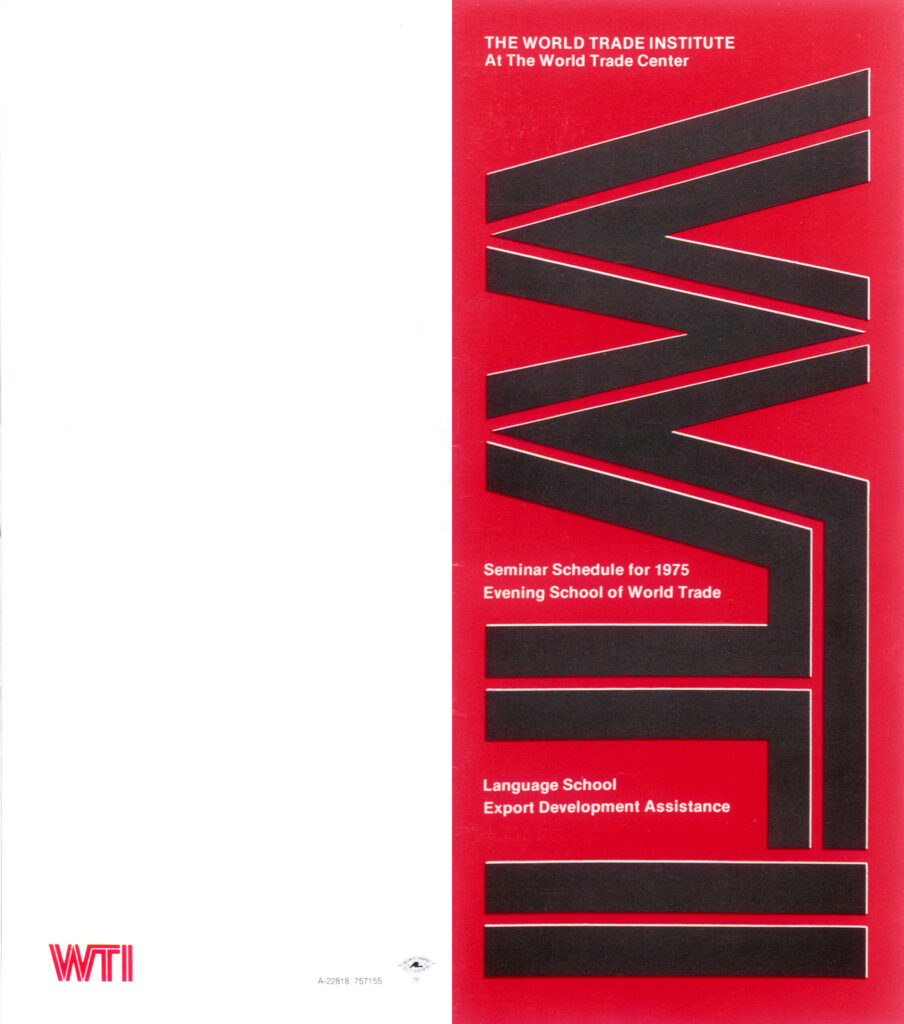
The World Trade Institute exists to this day, offering programs of study in international law, economics, and political science. The 1975 brochure above advertised its seminar program and its Language School.
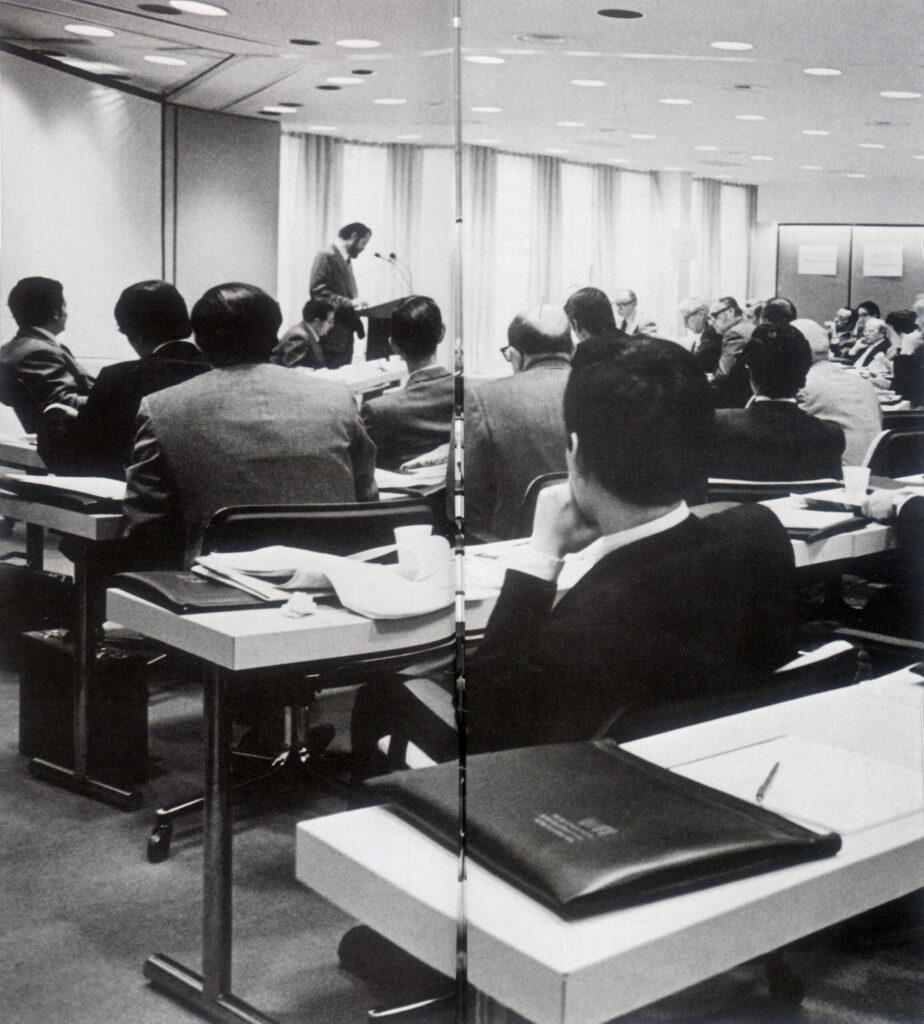
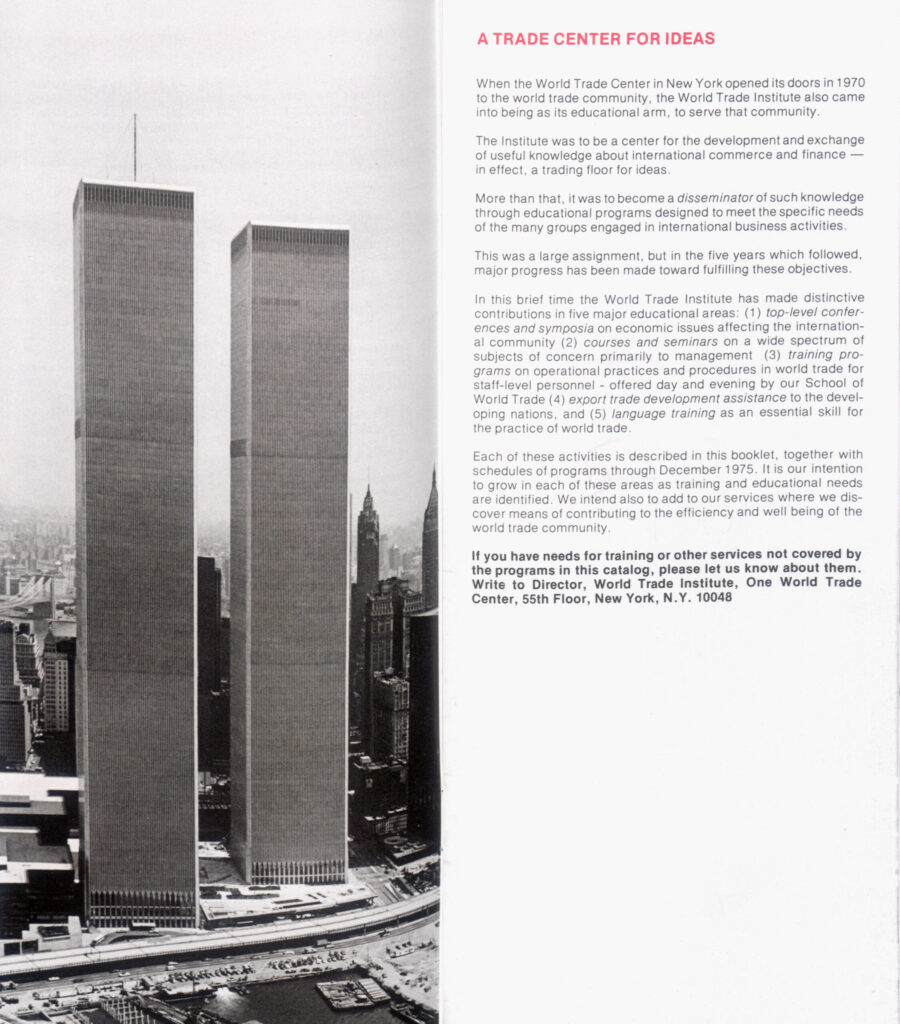
“A Trade Center for Ideas,” 1975
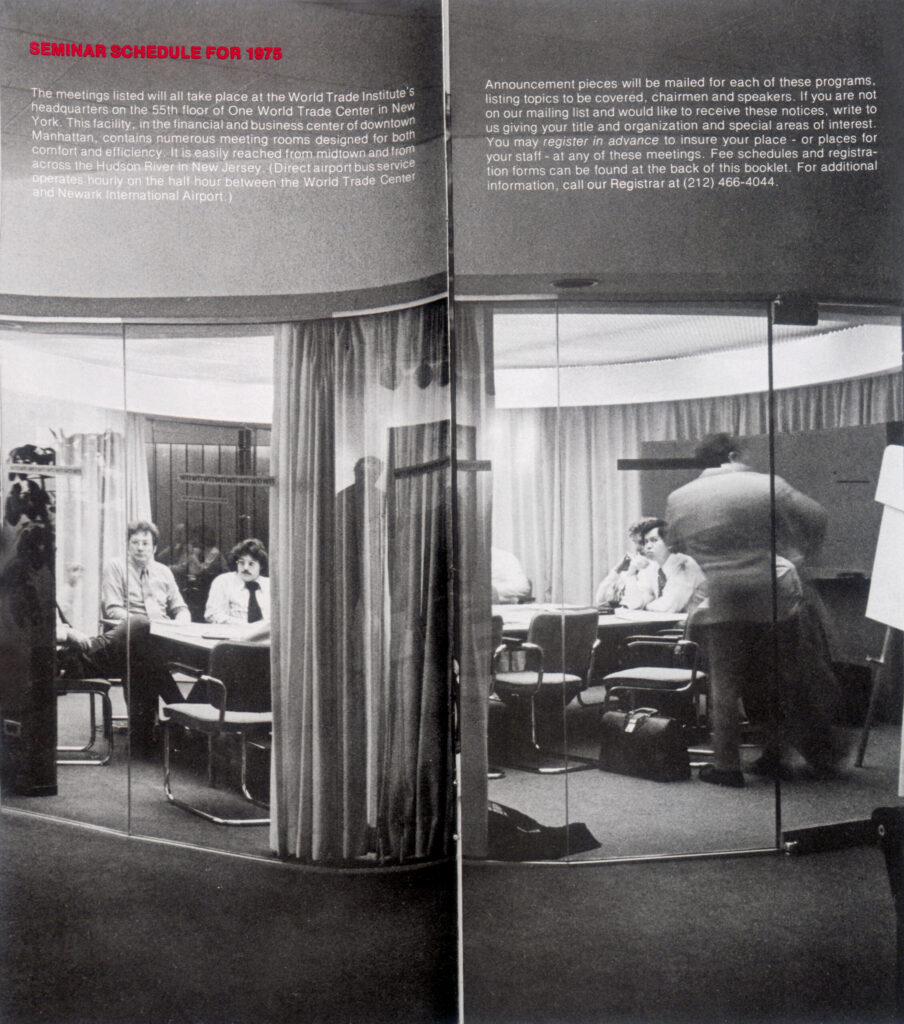
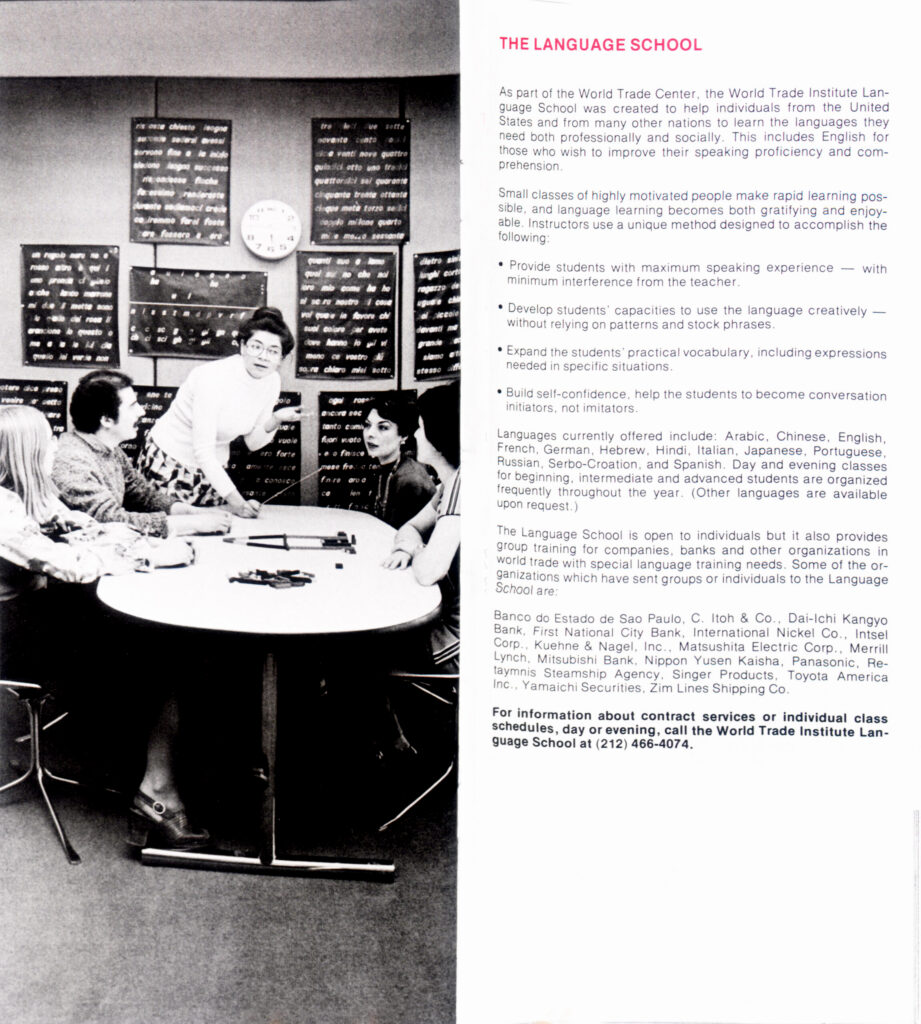
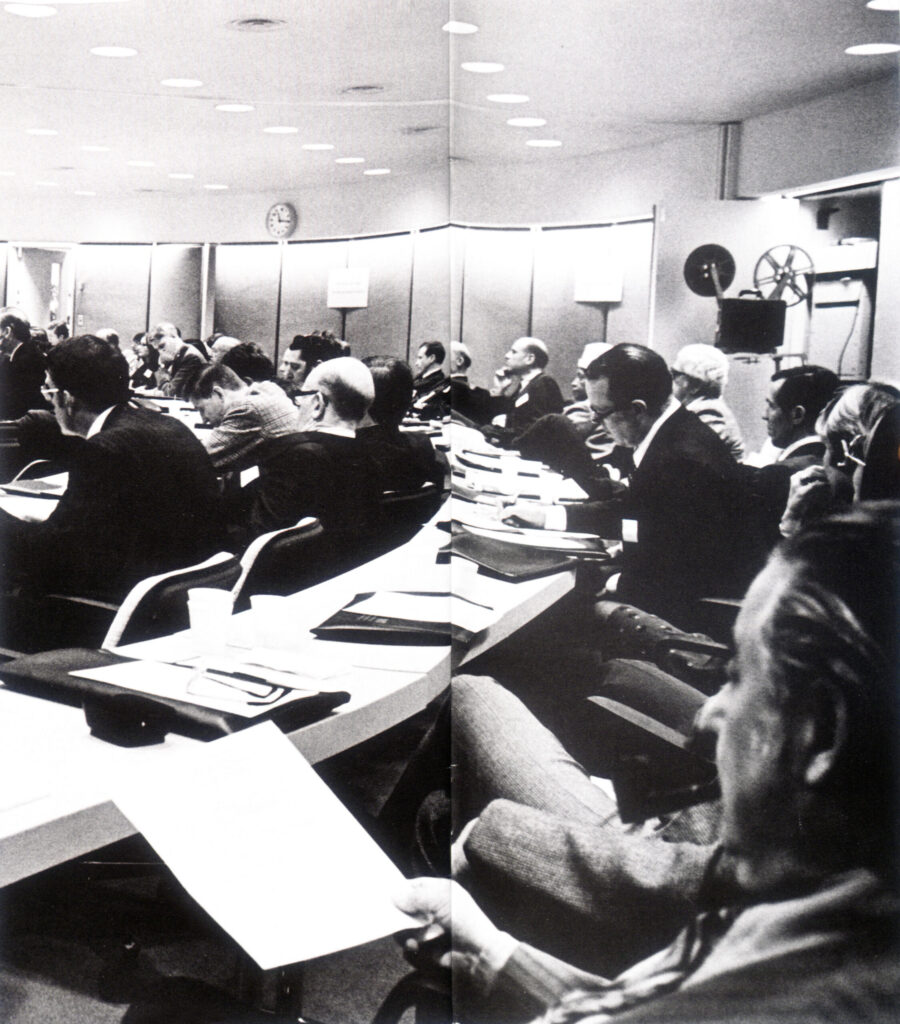
Entertainment was also a key component of World Trade Center activities. The Club at the Top of the World Trade Center offered dining and live performances.
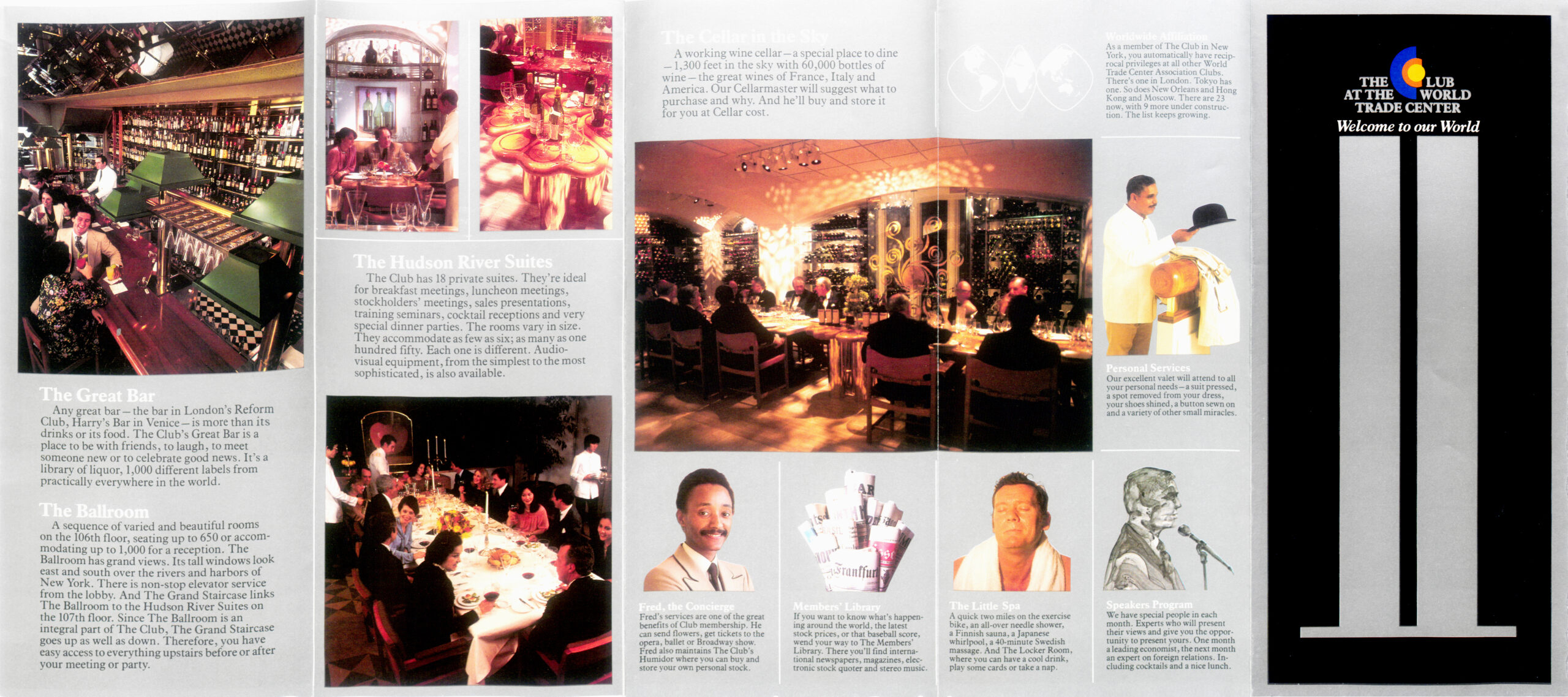
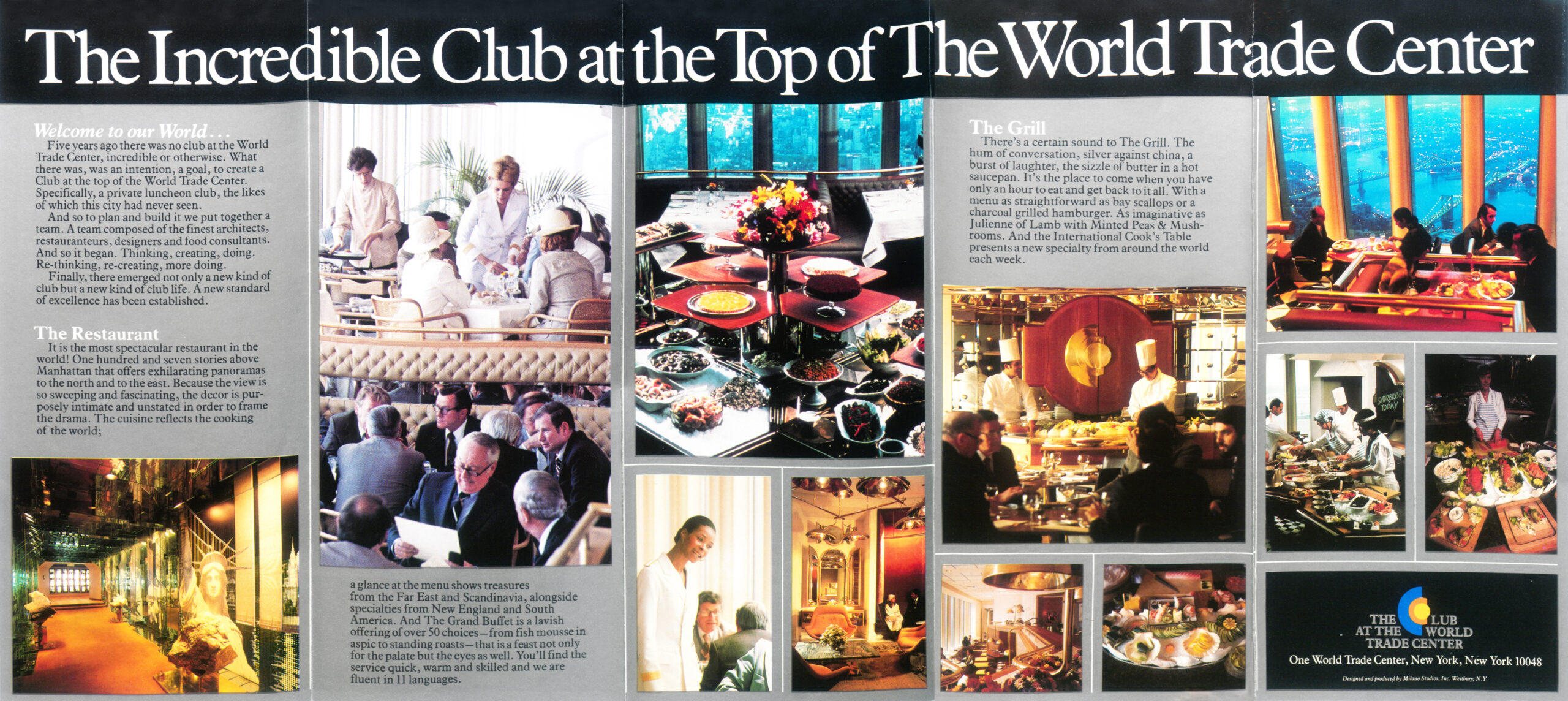
The Port Authority of New York & New Jersey reported on the progress of the site’s promotional activities in 1976.
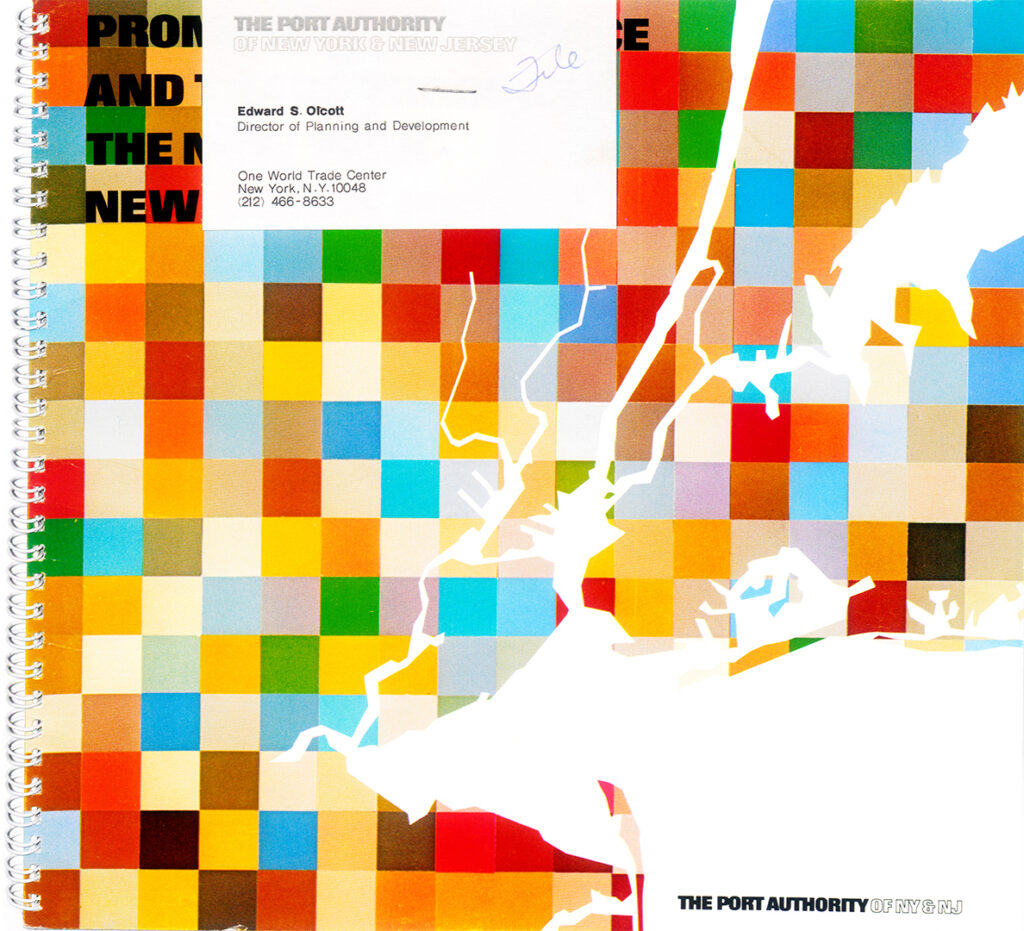
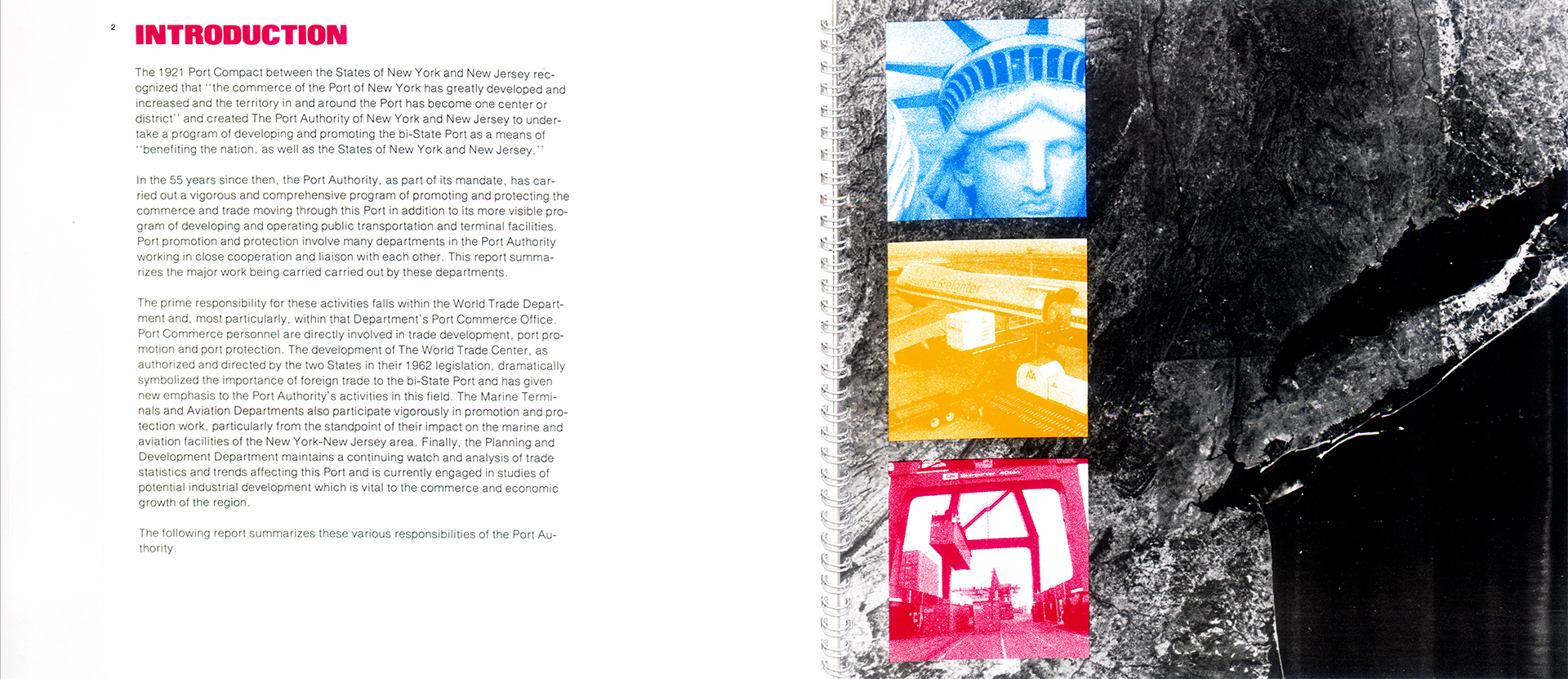
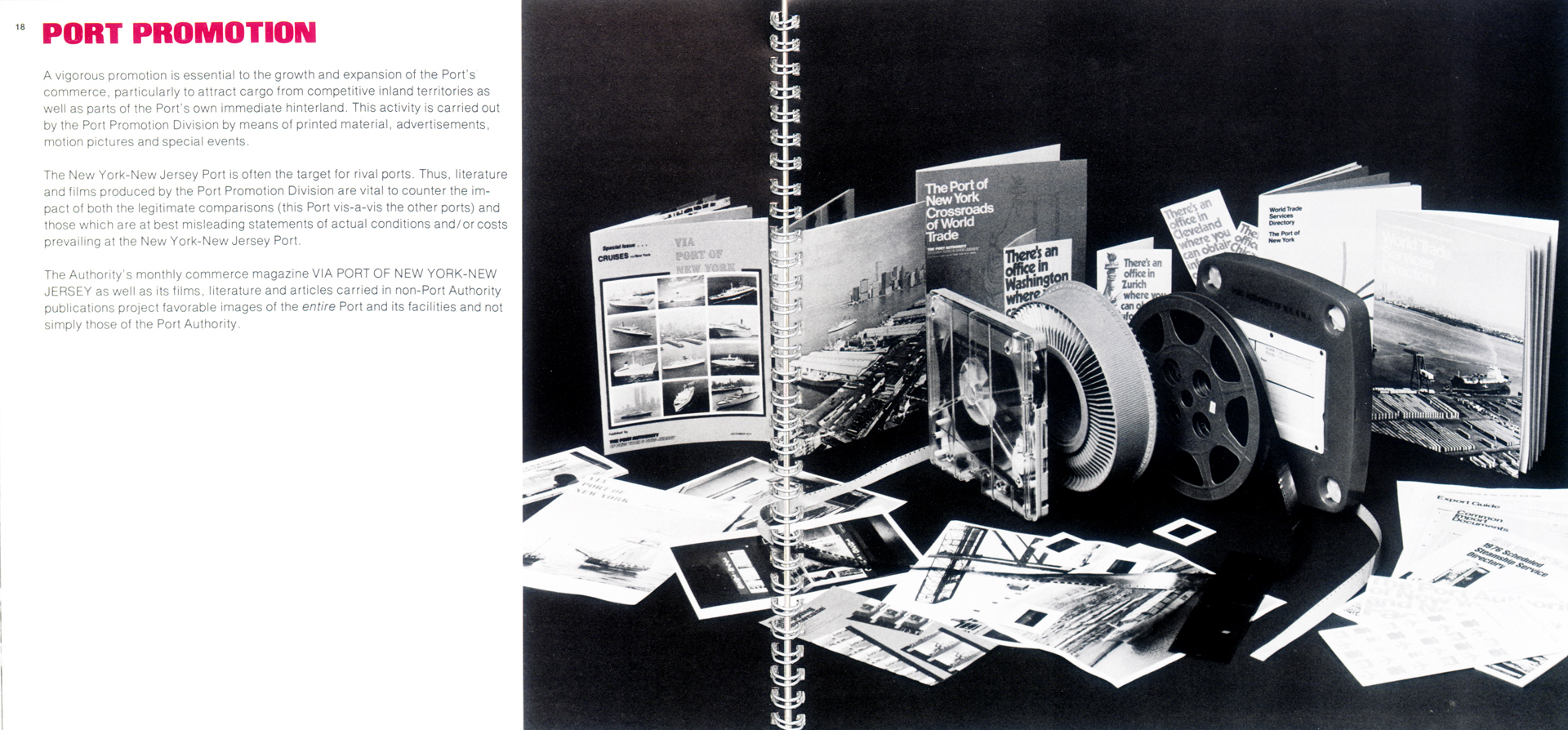
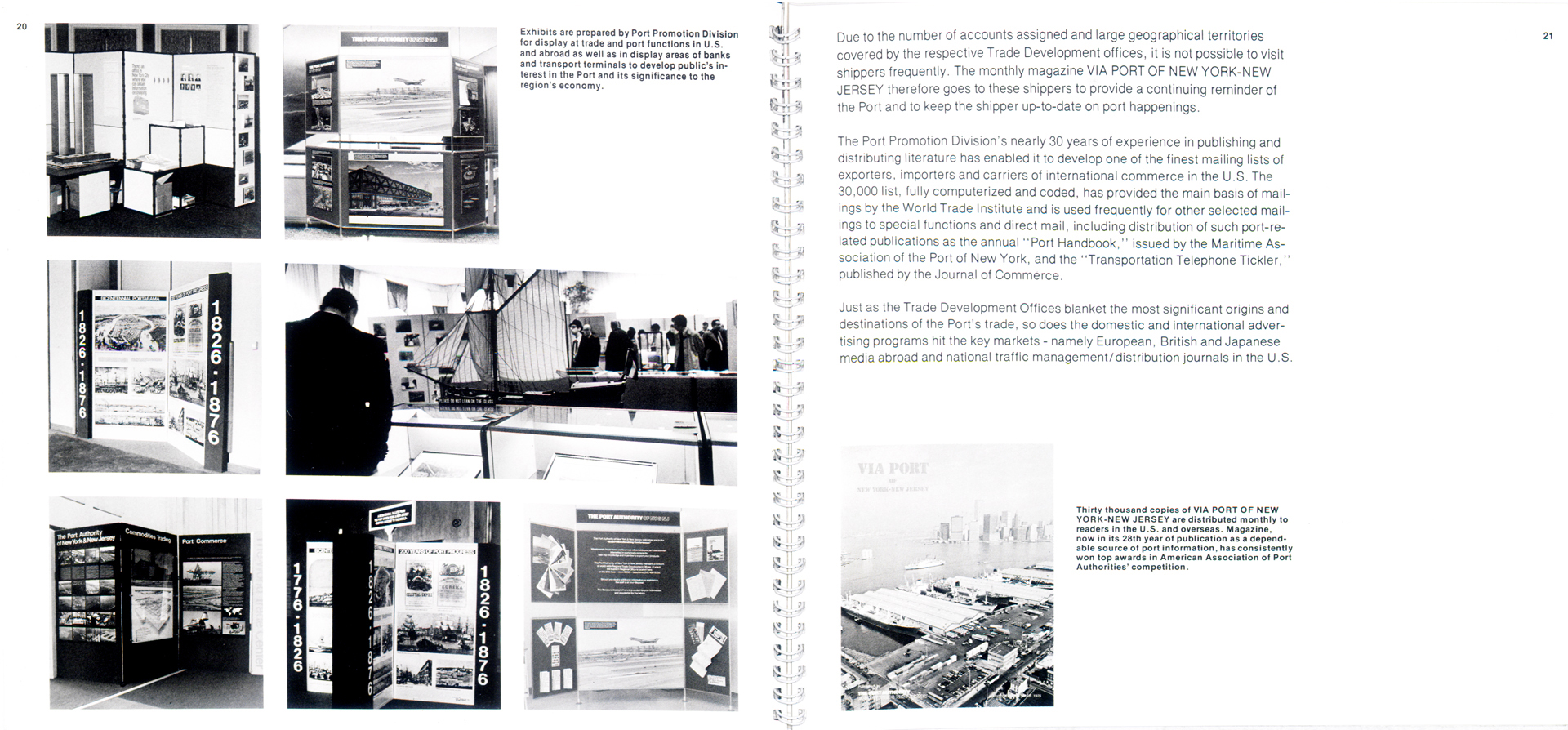
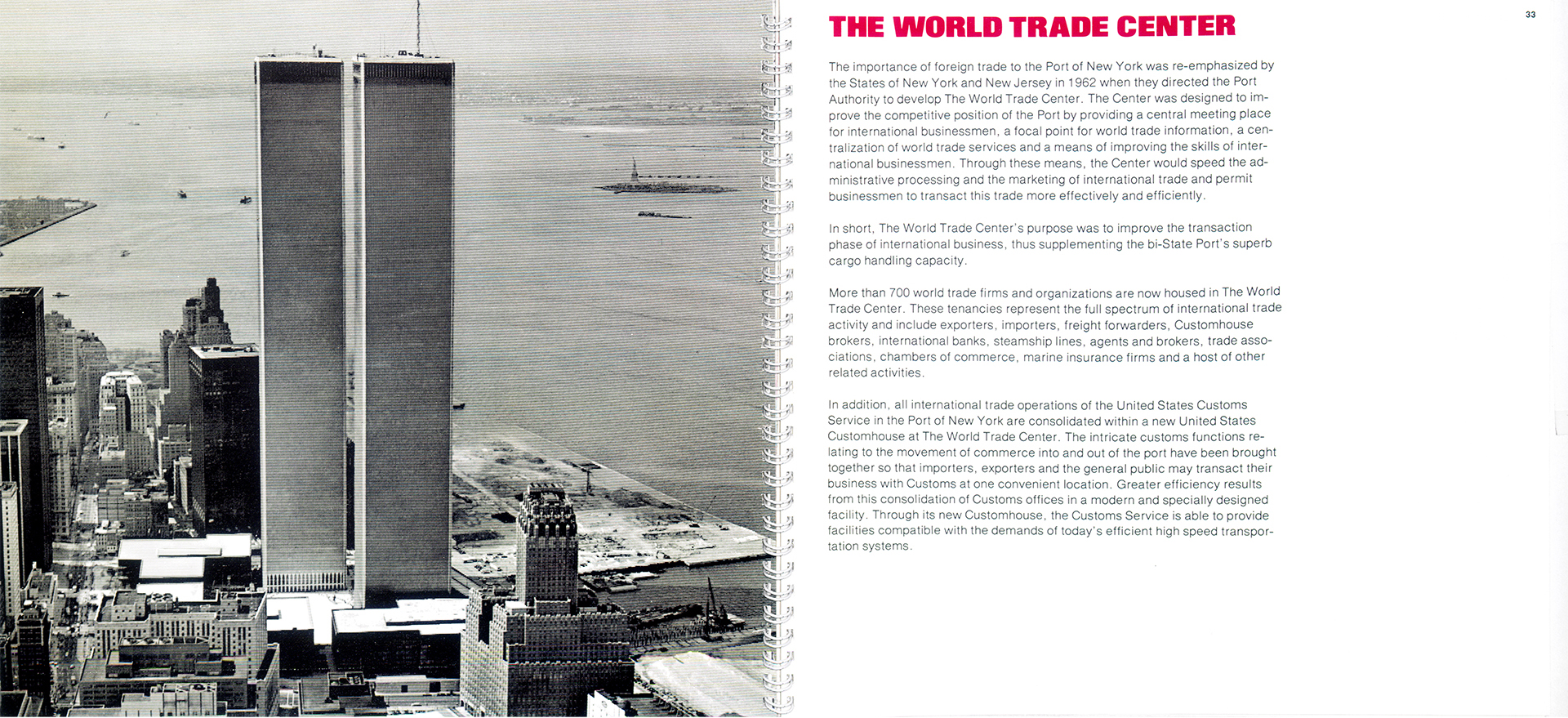
Changing the Face of Lower Manhattan Forever
The 1980 model below depicts what New York City’s Lower Manhattan was anticipated to look like by the 1990s. Standing behind it on the left is David Rockefeller, Chairman of the Downtown-Lower Manhattan Association, and on the right, Edmund F. Wagner, DLMA President. The model was made from 9,000 pieces individually cut to scale and shape of buildings. It represented 420 city blocks.
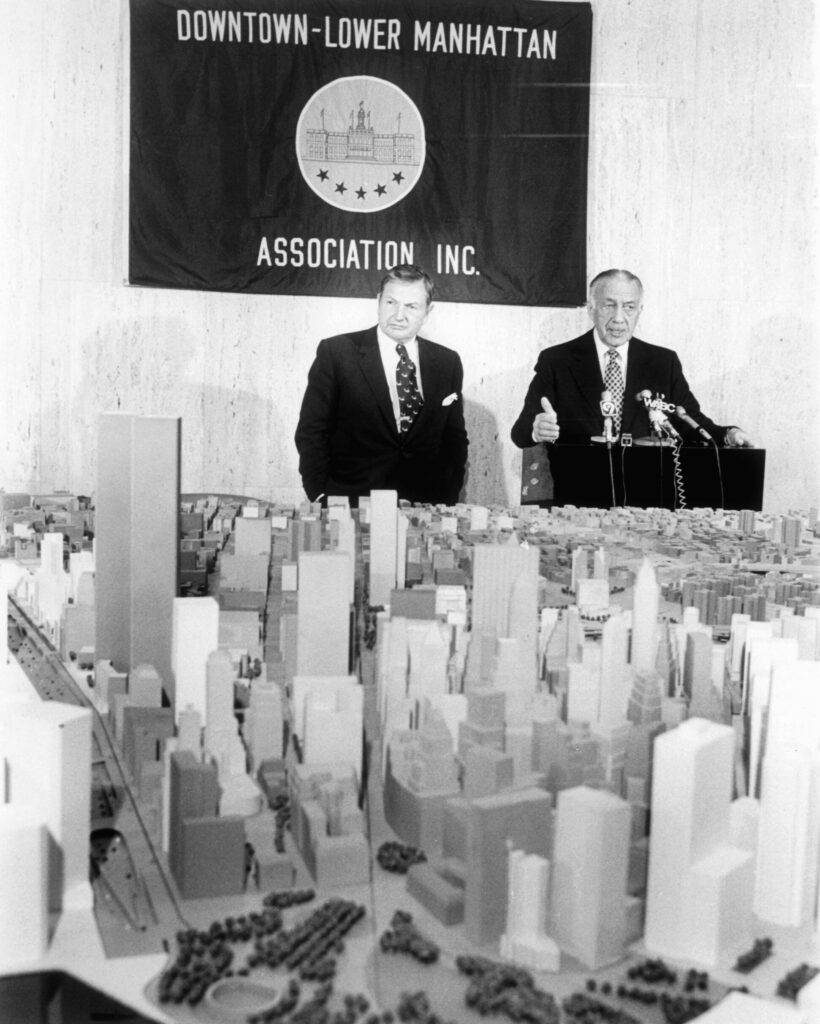
The World Trade Center’s first office space was occupied on December 15, 1970 in the North Tower. Offices became available for move-in while the entire complex was still under construction. Tenants began to move into the South Tower in January 1972.
The World Trade Center was dedicated on August 4, 1973 and destroyed by terrorist attack on September 11, 2001. From 2006-2012, the site was rebuilt and includes One World Trade Center, also known as the Freedom Tower.
Research This Topic in the Archives
Explore this topic by viewing records, many of which are digitized, through our online archival discovery system.
- “World Trade Center,” 1967-1969; Downtown-Lower Manhattan Association, Inc. records; DLMA, Inc., Series 2; Projects, Subseries 2.3; Rockefeller Archive Center;
- Downtown Lower Manhattan Association photographs, 1937-1995. Downtown Lower Manhattan Association photographs; Series 1081; Rockefeller Archive Center.
